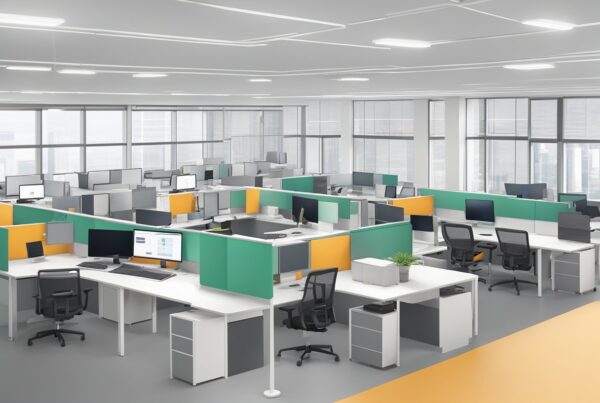From a tenant’s point of view, when you have multiple properties, you need to easily manage different aspects of leases/space utilization, maintenance of the locations and account for capital expenditures. Traditionally, these tasks are performed using separate CMMS, IWMS, and FAS (Fixed Asset Systems) tools. Each area is automated to a different extent which creates islands of automation with rigid boundaries.
For example, leasing a new space requires inputting of the data in multiple systems. Each system would have its own interface and requirements which would then make it hard to manage the process and would require developing separate expertise and processes.
In an integrated environment, there are no boundaries between the different application areas and the information is readily available to users from their own perspectives and based on what is important to them. There are some key components of such an integrated system which are necessary for its successful implementation. Otherwise, the environment and interface might become too complicated to use.
Repair and Maintenance (R&M) versus Capital expenditure (MRO versus CapEx)
What starts as a repair and maintenance activity may end up being considered as a capital expenditure item. For example, you may start fixing a short in an electric circuit and then discover that a certain part of the wiring and the electric panel need to be replaced (Please see our related blog – http://spacewell.us/blog/cmms-usecases/). As items are identified to be CapEx (capital expenditure), the system needs to be able to allow reclassification of the costs related to CapEx. All CapEx costs then need to be setup for depreciation as appropriate.
This is an important consideration for a CMMS and/or IWMS tool. A lot of the tools in the market cannot handle a combination of R&M and CapEx activities and cannot provide tools for their reclassifications. This causes a lot of data re-entry and error prone, inefficient processes.
Workflow for required approvals, notifications and audit trails
The required processes for approval of R&M and CapEx are usually different as the funding sources and their approval authority are different. Also, the departmental authority and approvals should be considered. For example, an issue with a computer system (started as an IT issue) may turn out to be an electrical problem which requires the approvals of the facilities group. So, the system workflow needs to be very flexible and highly configurable. The branching based on the type of expenditure (R&M versus CapEx), the amounts and departments needs to be easy to setup and to be able to reliably handle any combination of the possibilities.
Integrated database with extended data
Limited databases with rigid structures are one of the key issues for most of the isolated system today. A traditional lease management system cannot provide the required database bandwidth for managing maintenance and capital expenditure. Similarly, for traditional CMMS and FAS tools.
An ideal system needs to have a database which integrates the different aspects of the property, assets and operations so that it can easily handle leases, maintenance, space management, capital expenditure and capital projects. The database needs to be agile enough so that it can manage each of these areas efficiently.
Role based access
An important consideration of a system is having a flexible and configurable role-based access mechanism. This means that by simply assigning a role to a user, all their related environment, notifications, approvals would automatically be setup for the assigned role. These include the following:
- A specific home page for the role with the menus, reminders panels, dashboards for instant overview of the key performance indicators (KPI’s) .
- Simplified screens with the authorized field and editing capabilities
- Workflow tasks for review, notification and approvals.
The role-based process allows you to easily move employees in and out of the specific positions as needed.
Asset Depreciation
Asset depreciation is traditionally performed in a dedicated program such as a fixed asset system. There are issues with this approach such as creating a feed into this program from CapEx and capital projects. Also, creating an export from such a system to the financial and accounting system in the backend. The fixed asset system then requires dedicated resources to monitor the imports and exports as well as performing the depreciation.
In an integrated environment, the capital expenditure items are automatically lined up as fixed assets and are setup for depreciation. The results are posted to the accounting automatically. This results in spending much less effort and getting much better results.
Comprehensive Built-in and Ad-hoc Reporting
Once the data is in the system, different groups of users would need reports and dashboards which are specific to what they need.
The system should provide a rich set of built-in reports as well as the tools to create custom and ad-hoc reports. The system should also provide tools for integration with other reporting and BI tools as needed.
Free Demo
Free DemoFree DemoAbout the author
Mehdi Khalvati, Ph.D. is the president of Axxerion Inc. Axxerion IWMS addresses properties and workplaces management and has comprehensive capabilities for Lease, Maintenance, Space utilization and Capital Expenditure management. For more information, please review the property management modules (http://spacewell.us/software/iwms/ ) and contact Axxerion USA. Please send your feedback, thoughts and comments to mehdi@axxerionusa.com.







